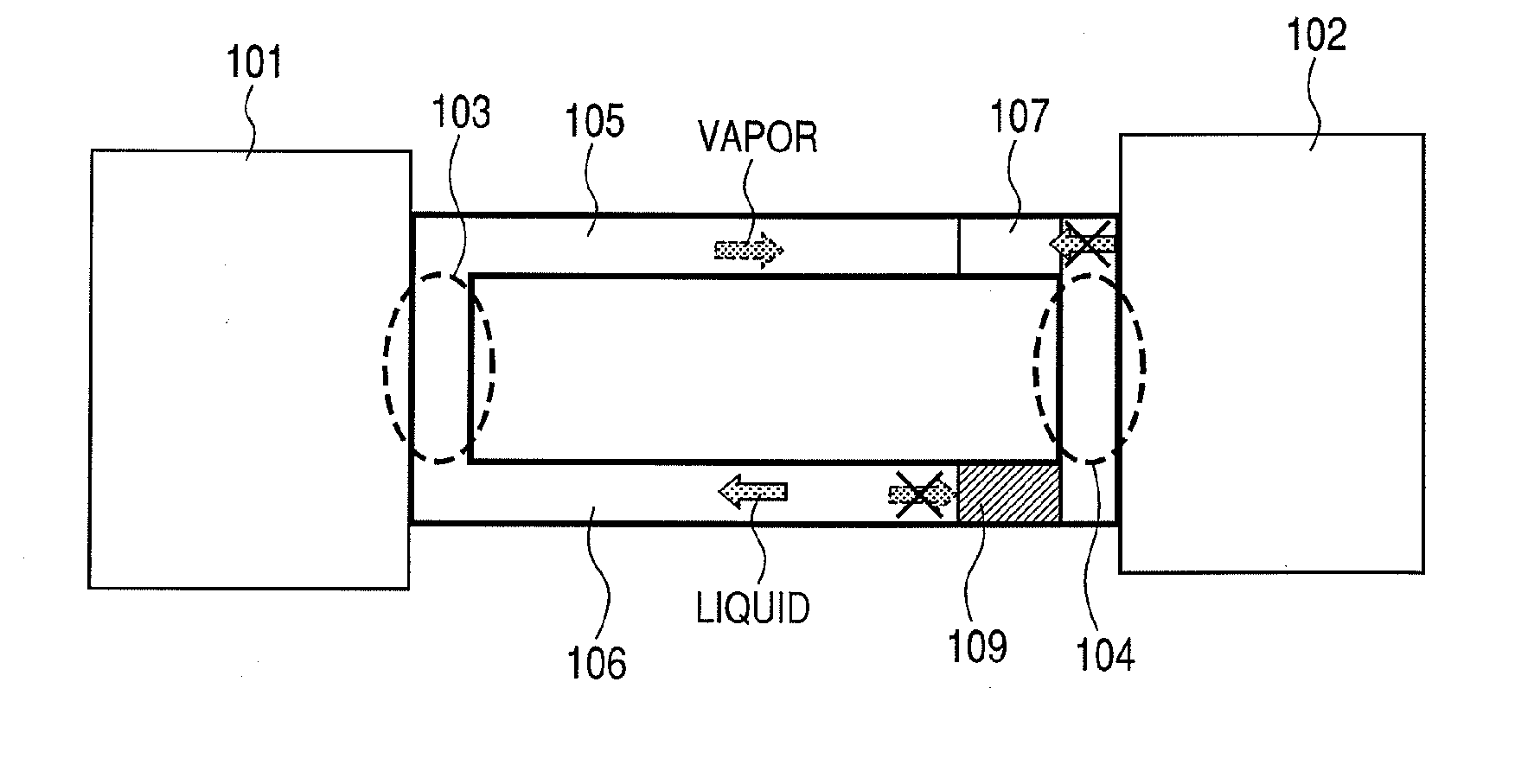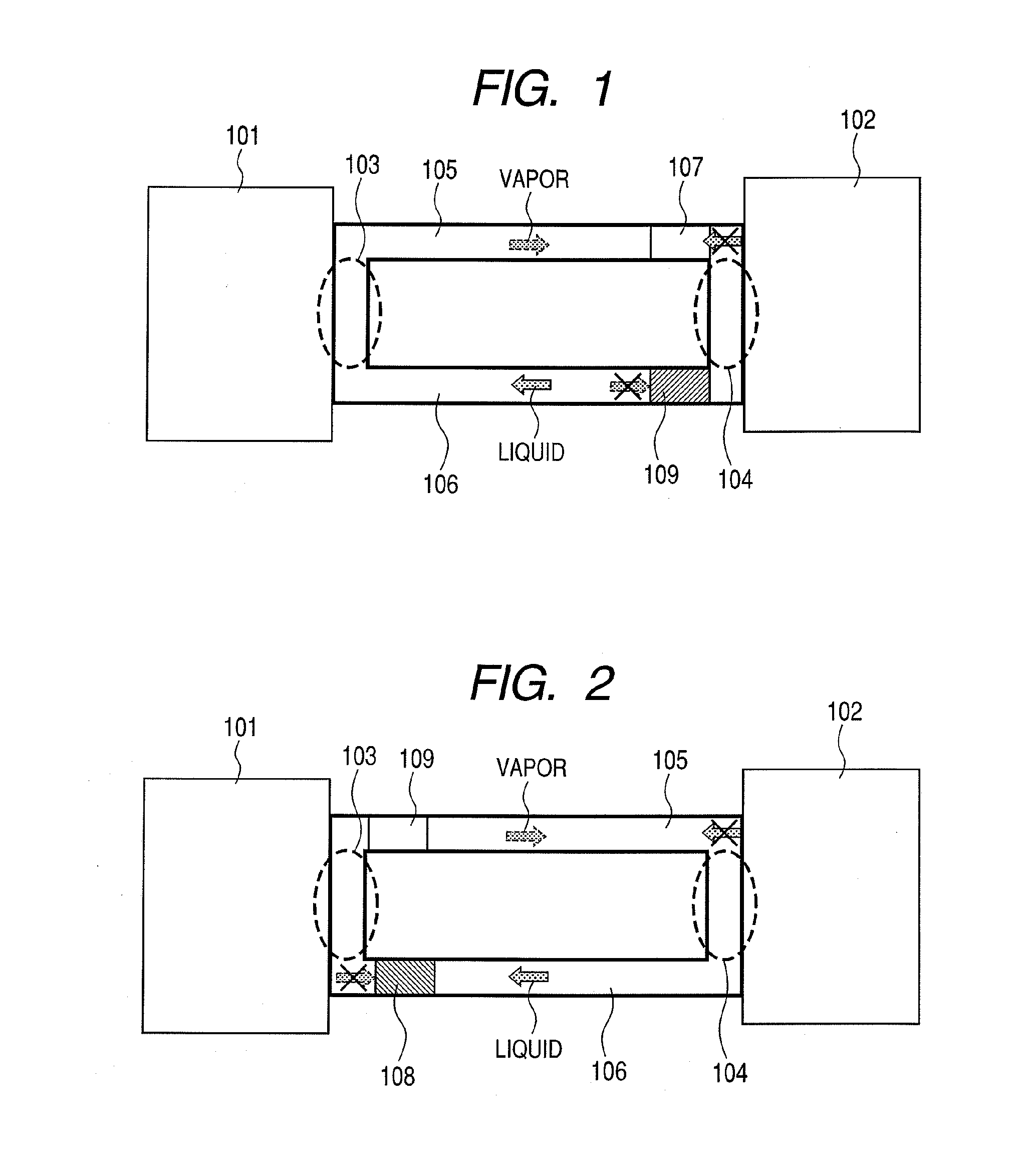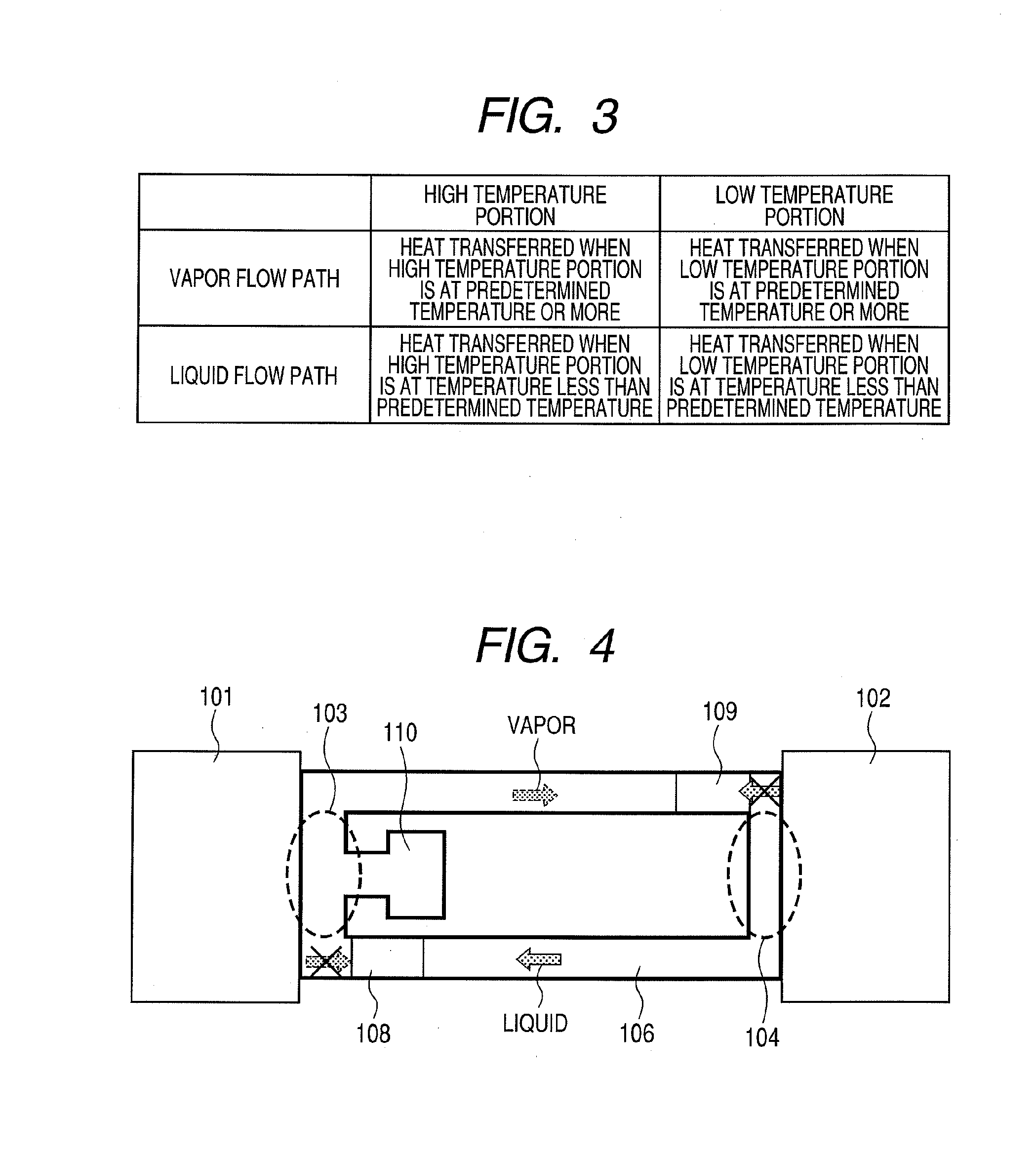Heat transfer controlling mechanism and fuel cell system having the heat transfer controlling mechanism
a technology of heat transfer control and fuel cell system, which is applied in the direction of process control, lighting and heating apparatus, instruments, etc., can solve the problems of unable to supply sufficient energy through the primary battery without increasing the size and weight of the device, and unable to allow the secondary battery to be immediately used on demand, etc., to achieve efficient heat transfer and reduce the effect of size and power consumption
- Summary
- Abstract
- Description
- Claims
- Application Information
AI Technical Summary
Benefits of technology
Problems solved by technology
Method used
Image
Examples
embodiment 1
[0124]The configuration of a loop heat pipe of Embodiment 1 of the present invention will be described.
[0125]FIG. 1 is a schematic diagram illustrating the configuration of the loop heat pipe of Embodiment 1. In FIG. 1, reference numeral 101 denotes a high temperature portion, 102 a low temperature portion, 103 a vaporizing portion, 104 a condensing portion, 105 a vapor flow path, 106 a liquid flow path, 107 a hydrophobic portion, and 109 a wettability changing portion. In the loop heat pipe of this embodiment, the vaporizing portion 103 is provided in contact with the high temperature portion 101, the condensing portion 104 is provided in contact with the low temperature portion, and a loop-shaped flow path is provided between the vaporizing portion 103 and the condensing portion 104.
[0126]One side of the loop-shaped flow path is the vapor flow path 105, and the other side thereof is the liquid flow path 106. The vapor flow path 105 is provided with a portion, which permits the pas...
embodiment 2
[0146]The configuration of a loop heat pipe of Embodiment 2 of the present invention will be described.
[0147]FIG. 7 is a schematic diagram illustrating the configuration of the loop heat pipe of Embodiment 2. In FIG. 7, the elements that are the same as those described in Embodiment 1 are identified by like numerals, so that the description of common portions will be omitted.
[0148]In FIG. 7, reference numeral 108 denotes a hydrophilic portion, and reference numeral 201 denotes a member, which is displaced depending on temperature.
[0149]In the loop heat pipe of this embodiment, a vaporizing portion 103 is provided in contact with the high temperature portion 101, a condensing portion 104 is provided in contact with the lower temperature portion 102, and a loop-shaped flow path is provided between the vaporizing portion 103 and the condensing portion 104.
[0150]One side of the loop-shaped flow path is a vapor flow path 105, and the other side is a liquid flow path 106. The vapor flow p...
example 1
[0162]In Example 1, a first production method of a loop heat pipe of Embodiment 1 will be described.
[0163]Although in this example description will be made by taking as an example a case where the semiconductor processing technology is mainly used, the heat pipe may be produced by using the mechanical processing technology, such as cutting or pressing.
[0164]FIGS. 9A to 9E are views illustrating a first production method of producing a loop-type heat pump of Embodiment 1.
[0165]In FIGS. 9A to 9E, the elements that are the same as those described in Embodiment 1 with reference to FIG. 1 are identified by like numerals, so that the description of common portions will be omitted.
[0166]In FIGS. 9A to 9E, reference numeral 301 denotes a substrate-1, 302 a substrate-2, 304 an injection port, 305 a porous portion, 306 a working fluid, and 307 a sealing agent.
[0167]In the production method of the loop heat pipe of this example, FIG. 9A shows a step of forming flow paths 105, 106 in the substr...
PUM
| Property | Measurement | Unit |
|---|---|---|
| temperature | aaaaa | aaaaa |
| temperature | aaaaa | aaaaa |
| voltage | aaaaa | aaaaa |
Abstract
Description
Claims
Application Information
 Login to View More
Login to View More - R&D
- Intellectual Property
- Life Sciences
- Materials
- Tech Scout
- Unparalleled Data Quality
- Higher Quality Content
- 60% Fewer Hallucinations
Browse by: Latest US Patents, China's latest patents, Technical Efficacy Thesaurus, Application Domain, Technology Topic, Popular Technical Reports.
© 2025 PatSnap. All rights reserved.Legal|Privacy policy|Modern Slavery Act Transparency Statement|Sitemap|About US| Contact US: help@patsnap.com



